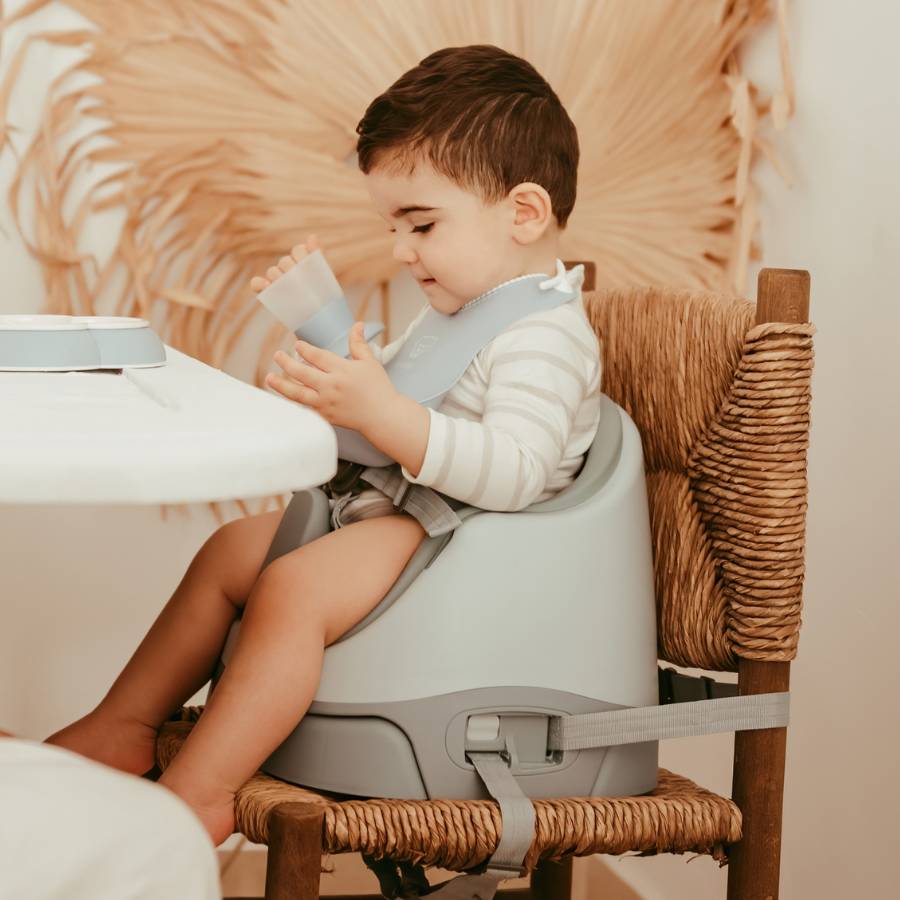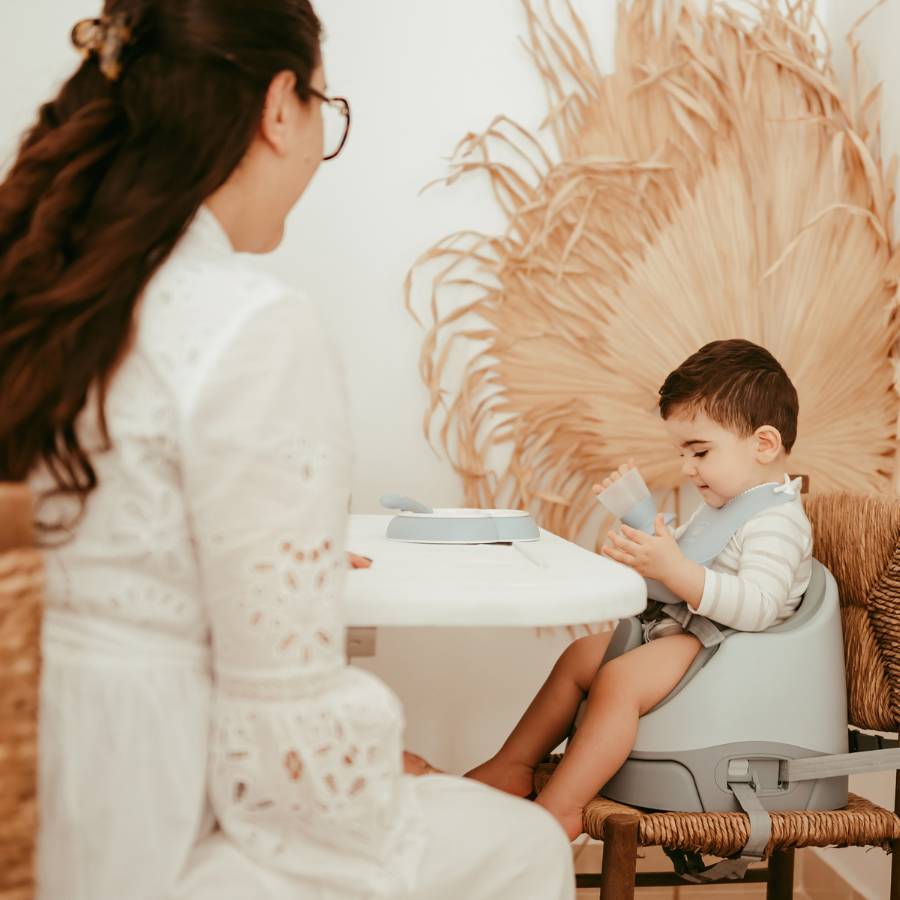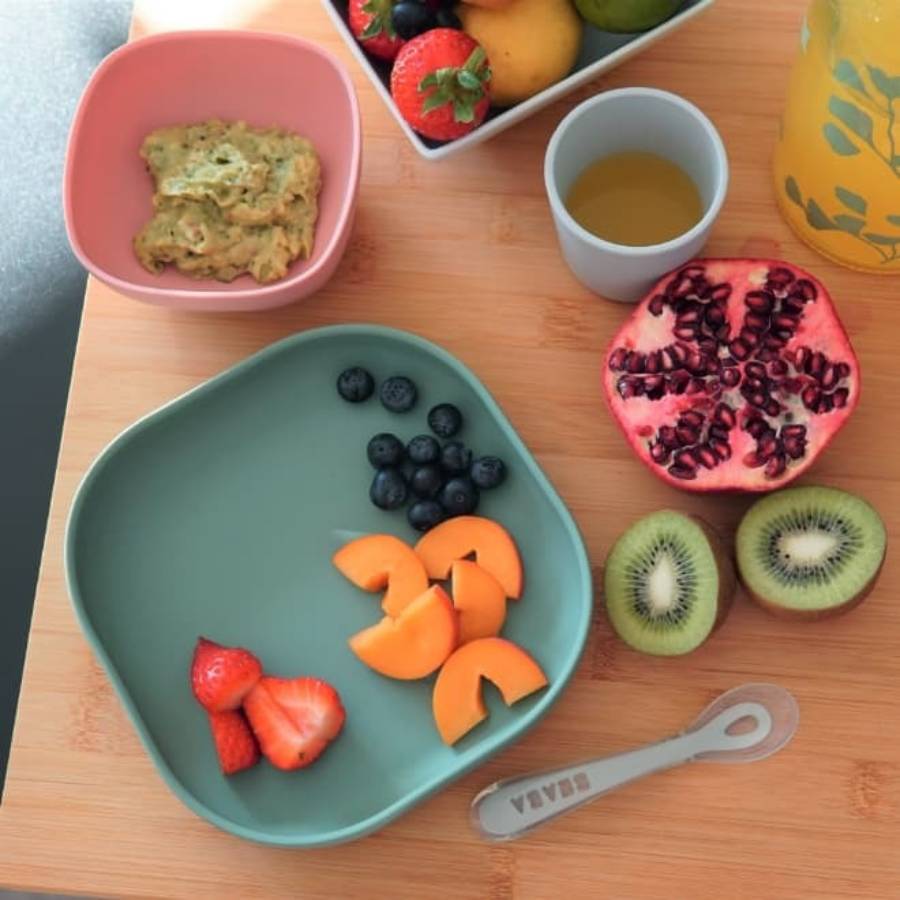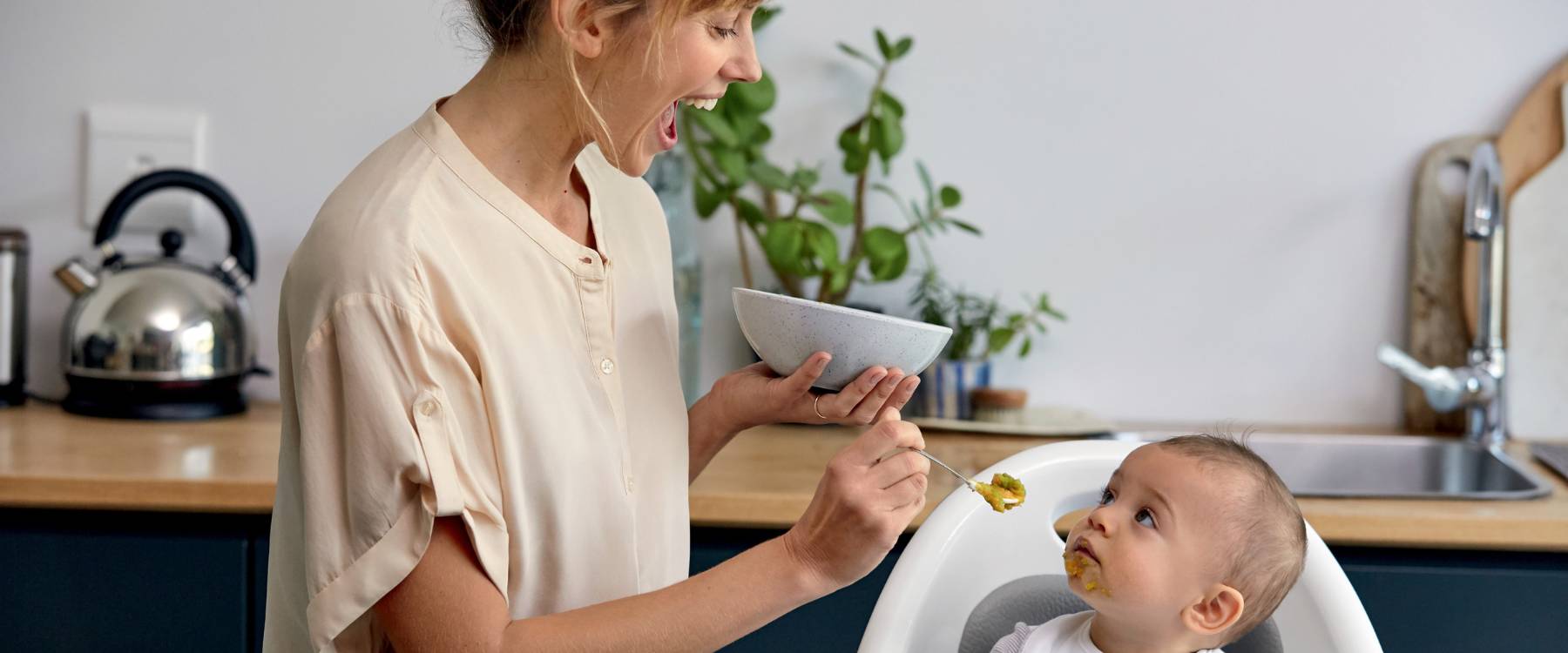
When should I start weaning?
blah You can start complementary feeding your little one when they are between 17-26 weeks old, as long as they demonstrate some signs that they are ready for the process. Notice if they have learned how to sit independently with support, hold their head upright, have lost the tongue thrust reflex and demonstrate hand-to-mouth coordination. Additionally, they might start showing an interest in the food you are eating and develop the ability to refuse food if they are not hungry. These subtle indications from your baby will confirm that it is the right time to start weaning.

What products do I need before starting weaning?
While the change to solid foods can be a messy and challenging affair, having some of the below products will make it an easier and safer experience for your baby. First and foremost, invest in a highchair that has a footrest to support your little bundle of joy. Our extensive range of baby highchairs includes options that are functional, comfortable and stylish in various colourways, patterns and designs to choose from. Other must-haves are bibs, soft spoons, suction bowls, a weaning mat and your baby’s first cup. You can also look into purchasing food steamers and processors to make preparing food for your little one easier.

How to make weaning a positive experience for my infant?
To build healthy eating habits in children, it is good to start young with a positive environment that encourages them and puts them at ease. For starters, place their high chair in the same space for all meal times. We do not recommend using screen time to entertain children during their meal times. Cecile highly advises making it a fun family affair. Ideally, eating with your child allows them to mimic you. This in turn will provide them with positive associations as they learn to trust the food they are eating.
Consistency and patience are key to happy meal times, letting your little one eat at their desired pace. Allow your little one to indicate to you how much they feel like eating. They will turn away or refuse to open their mouth and even spit out food when full or no longer interested.
Your role is to ensure you offer a balanced diet resulting in regular bowel movements to avoid constipation. In case of constipation, they might be uncomfortable and become less interested in food. Cecile also recommends you attend a first-aid course to learn how to react if your little one is gagging or choking. Malaak offers informative workshops that guide parents on the subject.

What foods are good for weaning?
During the first stage of weaning when they are around 6 months old, you can start with purees or soft, cooked vegetables. Some first food suggestions are avocado, sweet potatoes, apples and pears. Start slow and offer one new food at a time.
For the second stage from about 7 months, your baby can be introduced to more textures and tastes. Be mindful of flavours when combining because just like grown-ups, babies tend to like certain foods more than others. Smushed and soft food like mashed potatoes, yoghurt, cooked pasta and finger foods will help promote their mouths to chew without much difficulty.
As your baby progresses to the third stage around 9-12 months, you can start adding herbs like basil and rosemary to vegetables and spices such as cinnamon to bowls of oats and porridge to make mealtimes far more interesting. Most of all, you need to remember that every baby goes through weaning at their own pace and this process is all about learning through experimenting to understand your little one’s likes and dislikes.




